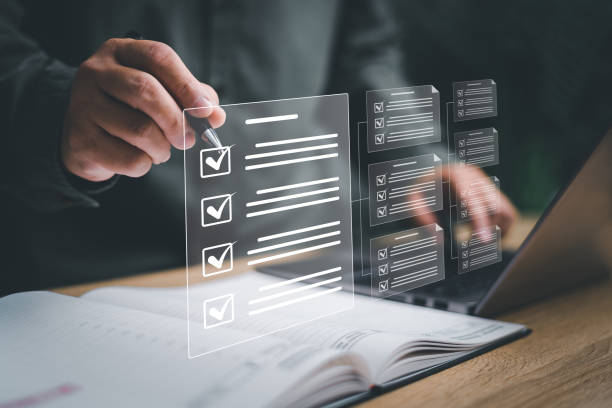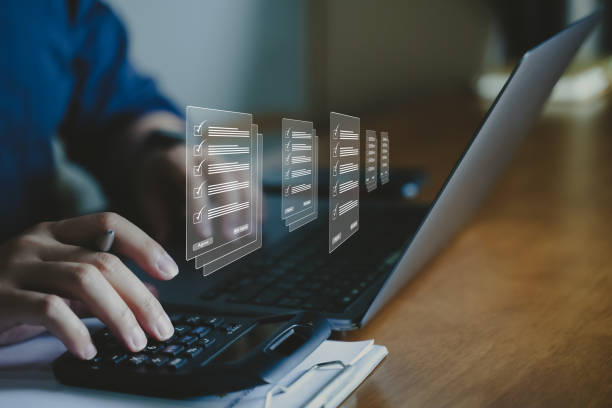What is On-Page SEO and Why is it Important?

#On-Page SEO is a set of techniques and actions that are performed within your website to improve your site’s ranking in search engine results like Google.
Unlike Off-Page SEO, which focuses on activities outside the site, On-Page SEO involves optimizing elements such as content, site structure, keywords, and HTML tags.
The importance of On-Page SEO lies in the fact that it helps search engines better understand your site’s content and recognize its relevance to users’ search queries.
When On-Page SEO is done correctly, the likelihood of your site appearing in higher search results rankings increases, resulting in more organic traffic.
This organic traffic is usually accompanied by a higher conversion rate, as users who reach your site through search are looking for information or products that you offer.
In fact, On-Page SEO is the foundation upon which other SEO strategies are built.
Without internal optimization, your efforts in the field of Off-Page SEO and content marketing may not yield desirable results.
Therefore, investing in On-Page SEO is a necessary action for any business that wants to succeed in the online world.
Are you losing potential customers due to an unprofessional website? Rasaweb is your answer! With our specialized corporate website design services:
✅ Enhance the credibility and position of your business
✅ Experience attracting more targeted customers
⚡ Act now to receive a free consultation!
Keyword Research: A Fundamental Step in On-Page SEO
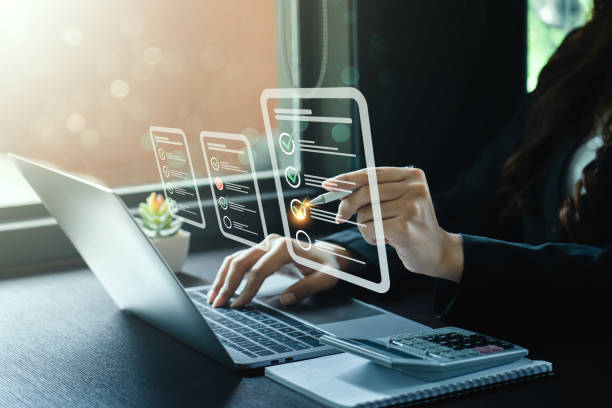
Keyword research is one of the most important steps in On-Page SEO.
This process involves identifying the phrases and words that users use to search for information, products, or services related to your business in search engines.
By knowing these keywords, you can optimize your site’s content to match the needs and desires of your target audience.
To perform keyword research, you can use various tools such as Ahrefs Keywords Explorer, Moz Keyword Explorer, and Ubersuggest.
These tools help you find keywords related to your field, check their search volume, and assess the level of competition for each keyword.
When choosing keywords, look for phrases that are both relevant to your business and have a reasonable search volume.
Also, pay attention to the level of competition for each keyword.
If the competition for a keyword is very high, it may be difficult to rank well in search results.
In this case, you can look for longer keywords (Long-Tail Keywords) that have lower search volume, but usually less competition.
Proper use of keywords in titles, meta descriptions, tags, and main text greatly contributes to On-Page SEO.
Optimizing Titles and Meta Descriptions

Titles and meta descriptions are two important elements in On-Page SEO that play a significant role in attracting users from search results to your site.
The Title Tag is the text that appears at the top of the browser and in search results.
The Meta Description is also a summary of the page content that appears below the title in search results.
To optimize titles, you should use keywords related to the page content and write the title in an attractive and catchy way.
The title length should not exceed 60 characters so that it is fully displayed in search results.
Also, each page of your site should have a unique title.
Regarding meta descriptions, you should provide an accurate and compelling summary of the page content that encourages users to click on your site’s link.
The meta description length should not exceed 160 characters.
Using keywords in meta descriptions can also help improve your site’s ranking in search results.
Both the title and meta description should be written in a way that answers the user’s question.
The table below shows some examples of appropriate titles and meta descriptions for a hypothetical page about On-Page SEO training:
| Title | Meta Description |
|---|---|
| Comprehensive On-Page SEO Training for Websites in 2024 | In this article, learn all the important techniques and tips for on-page SEO and increase your site’s ranking on Google. |
| Step-by-Step On-Page SEO Guide for Beginners | If you’re just starting out and want to begin your site’s on-page SEO, this article is for you. |
| Increase Site Traffic with Optimized On-Page SEO | By optimizing your site’s on-page SEO, attract more organic traffic and increase your sales. |
Optimizing Content for Search Engines
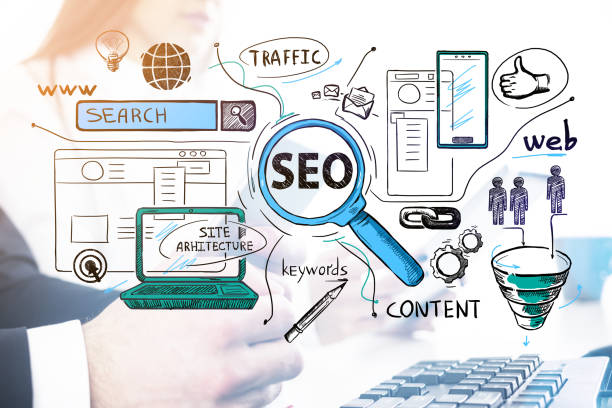
Content is king! This famous phrase in the world of On-Page SEO indicates the great importance of content in your site’s ranking in search results.
Search engines like Google are looking for high-quality, relevant, and valuable content for users.
Therefore, if you want your site to rank high in search results, you must produce content that is both useful to users and understandable to search engines.
To optimize content, you should use keywords related to the topic of the page, but avoid overusing keywords (Keyword Stuffing).
Also, your content should be readable, engaging, and organized.
Using headings, subheadings, paragraphs, and images can help improve the readability of your content.
In addition, your content should be unique and original.
Copying content from other sites can harm your site’s ranking.
Optimizing content for Search Engines (Search Engine Optimization) requires knowledge of SEO algorithms and rules.
Using valuable and comprehensive content greatly helps in attracting audience satisfaction and improving On-Page SEO.
Are you unhappy with the low sales of your online store?
Rasaweb is your solution for having a professional and high-selling online store.
✅ Significant increase in sales and revenue
✅ Easy and enjoyable shopping experience for customers
⚡ Get a free consultation from Rasaweb right now!
Optimizing Images
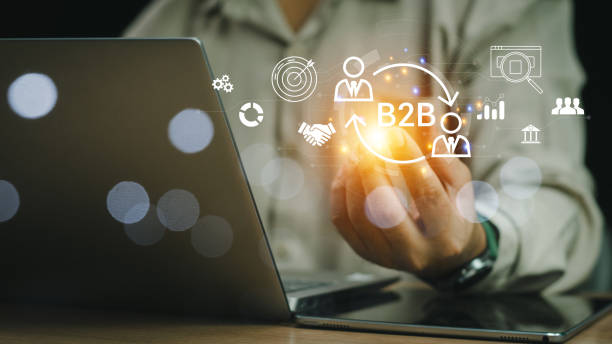
Images play an important role in attracting and engaging users with your site.
However, if images are not properly optimized, they can slow down the site loading speed and harm your site’s ranking.
To optimize images, you should reduce the file size of images, use appropriate formats (such as JPEG for photos and PNG for images with high graphics), and write Alt tags for images.
The Alt tag is the text that is displayed in place of the image if it is not displayed.
The Alt tag should be an accurate description of the image content and use keywords related to the page topic.
In addition, you can use a suitable file name for images.
The file name should be descriptive of the image content and use related keywords.
For example, instead of using the file name “IMG_1234.jpg,” you can use the file name “on-page-seo-training.jpg.”
Improving Site Loading Speed

Site loading speed is one of the important factors in On-Page SEO.
Users who visit your site expect the site to load quickly.
If your site is slow, users may leave the site and visit another site.
This can harm your site’s Bounce Rate and reduce your site’s ranking in search results.
To improve site loading speed, you can use various methods.
Reducing the file size of images, using Content Delivery Networks (CDN), enabling Gzip compression, and optimizing HTML, CSS, and JavaScript code are among these methods.
You can also use various tools such as Google PageSpeed Insights to check your site’s speed and identify potential problems.
Suitable URL Structure and Internal Links
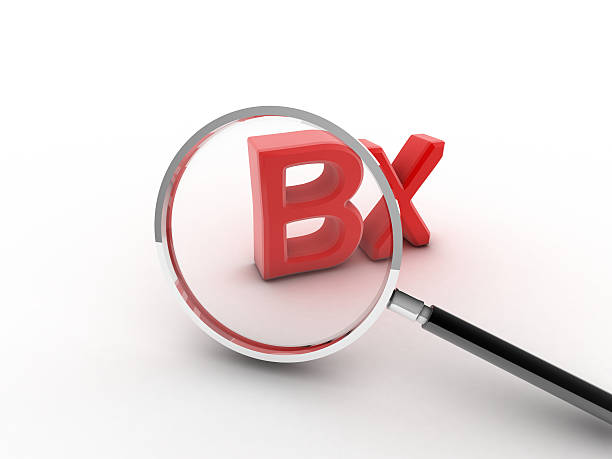
Suitable URL structure and internal links are two other important factors in On-Page SEO.
The URL structure should be simple, readable, and descriptive.
Avoid using long and complex URLs.
Also, the URL should include keywords related to the page topic.
For example, instead of using the URL “example.com/page?id=123”, you can use the URL “example.com/on-page-seo-training”.
Internal Links are links that point from one page of your site to another page of your site.
Internal links help search engines better understand your site structure and recognize the importance of different pages on your site.
Also, internal links can help improve the user experience and guide users to pages related to their topic of interest.
To use internal links, you must use appropriate anchor text.
The anchor text should be descriptive of the destination page content and use related keywords.
In the table below, examples of the mutual impact of internal links and On-Page SEO are mentioned:
| Title | Impact of Internal Links |
|---|---|
| Improve the Ranking of the Target Page | Linking to an important page from other pages on the site shows Google that this page is important to your site and should rank better. |
| Improve User Experience | Internal links help users easily navigate your site and find related pages. |
| Discover New Pages | Internal links help Google find and index new pages on your site faster. |
Optimizing for Mobile
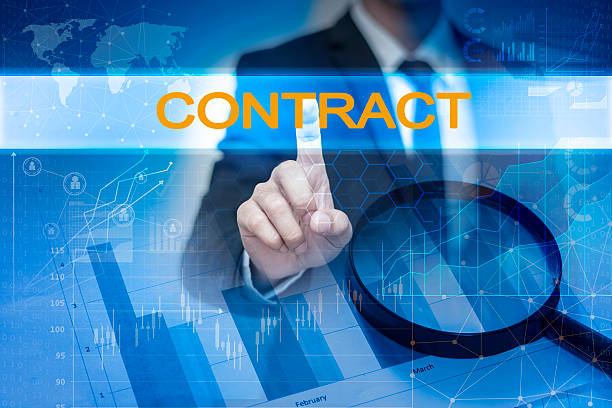
Today, more than half of internet traffic comes from mobile devices.
Therefore, optimizing the site for mobile is a vital factor in On-Page SEO.
Your site should be designed in such a way that it is properly displayed on mobile devices and provides a suitable user experience for mobile users.
To optimize the site for mobile, you should use Responsive Design, improve the site loading speed, and use large fonts and buttons so that mobile users can easily use your site.
Testing the site with Google Mobile-Friendly Test is very important to check the site’s compatibility with mobile.
Ignoring mobile site optimization harms the site’s On-Page SEO.
Does your current corporate website present a worthy image of your brand and attract new customers?
If not, turn this challenge into an opportunity with Rasaweb’s professional corporate website design services.
✅ Significantly improves the credibility and image of your brand.
✅ Paves the way for you to attract new leads and customers.
⚡ Contact Rasaweb now for a free and specialized consultation!
Using Schema Markup
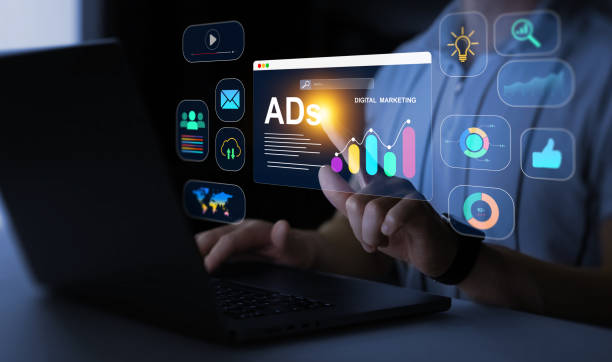
Schema Markup is a code that you can add to your site’s pages to help search engines better understand your site’s content.
Schema Markup provides search engines with more accurate information about the page’s topic, content type, and other related information.
This information can help improve your site’s display in search results and increase your site’s click-through rate (CTR).
To use Schema Markup, you can use various tools such as Schema Markup Generator.
Using Schema helps Google display the correct information about your content to the user and builds user trust.
Continuous Review and Update
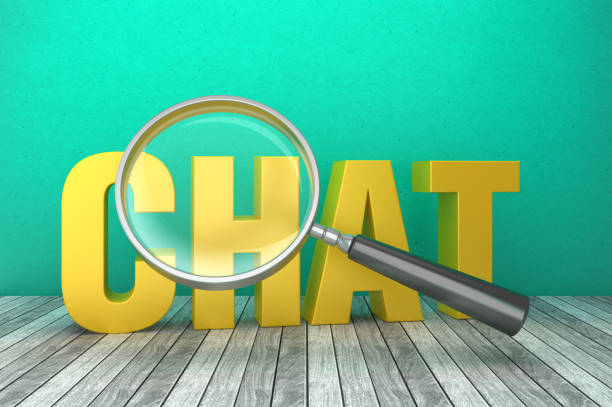
On-Page SEO is a continuous process and requires continuous review and update.
Search engine algorithms are constantly changing, and techniques that are effective today may no longer be effective tomorrow.
Therefore, you should regularly review your site, evaluate its performance, and make the necessary changes if needed.
To check your site’s performance, you can use various tools such as Google Search Console and Google Analytics.
These tools help you check your site’s traffic, identify the keywords that users use to reach your site, and find potential problems on your site.
On-Page SEO optimization is a permanent process and needs change and transformation.
Frequently Asked Questions
| Question | Answer |
|---|---|
| What is a Meta Title and why is it important in On-Page SEO? | The Meta Title is the most important element of On-Page SEO, which is displayed at the top of the browser tab and in search results. This title helps search engines and users understand the main topic of the page and should include the main keyword. |
| What role does Meta Description play in On-Page SEO? | The Meta Description is a short summary of the page content that is displayed below the title in search results. Although it does not directly affect the ranking, its appeal can increase the click-through rate (CTR). |
| How should keywords be used in page content? | Keywords should be used naturally and relevantly in strategic locations such as the title, headings, first paragraph, and body text. Avoid excessive keyword stuffing. |
| What is the importance of high-quality and comprehensive content in On-Page SEO? | High-quality, unique, informative, and comprehensive content that meets user needs is of great importance. Search engines rank content that creates real value higher. |
| What is the use of Heading Tags (H1-H6) in the On-Page SEO structure? | Heading tags (H1, H2, H3, etc.) are used to structure content and specify the importance of different sections. H1 is the main title of the page, and each page should have only one H1. Other tags are used for subheadings. |
| How do we optimize images to improve On-Page SEO? | To optimize images, use descriptive Alt Text that includes related keywords, reduce image file size without losing quality, and use meaningful and relevant file names. |
| What are the characteristics of a friendly URL for On-Page SEO? | A friendly URL should be short, readable, descriptive, include the main keywords, and be free of extra characters. The URL structure should be hierarchical and logical so that it is understandable for both users and search engines. |
| How does Internal Linking help On-Page SEO? | Internal linking helps users and search engine crawlers to better understand the site structure, transfer the credibility of pages, and increase the user’s time on the site by connecting related pages to each other. |
| What is the impact of page loading speed on On-Page SEO? | High loading speed is vital for both user experience and SEO ranking. Slower pages may be ignored by search engines and lead to an increase in Bounce Rate. |
| Why is Mobile-Friendliness so important in On-Page SEO? | Given the increasing number of searches through mobile devices, having a responsive and mobile-friendly site is essential for user experience and ranking in search results (Google’s Mobile-First Indexing). |
And other services of Rasa Web advertising agency in the field of advertising
Smart content strategy: A combination of creativity and technology to increase site visits through Google Ads management.
Smart social media: A combination of creativity and technology for online growth by using real data.
Smart link building: A creative platform to improve SEO ranking with an attractive user interface design.
Smart brand identity: Transform customer attraction by helping to customize the user experience.
Smart SEO: A fast and efficient solution to increase site visits by focusing on attractive user interface design.
And more than hundreds of other services in the field of internet advertising, advertising consulting and organizational solutions
Internet Advertising | Advertising Strategy | Advertorial Report
Resources
What is Inbound Marketing? | HubSpot
,What is On-Page SEO? A Comprehensive Guide to On-Page SEO Optimization | Semrush
,On-Page SEO Optimization | Moz
,On-Page SEO: The Complete Guide | Ahrefs
? Are you looking to boost your business in the digital world? Rasaweb Afrin Digital Marketing Agency, by providing comprehensive and innovative solutions, including multilingual website design, accompanies you on the path to growth and success.
📍 Tehran, Mirdamad Street, next to the Central Bank, South Kazerun Alley, Ramin Alley No. 6
“`

